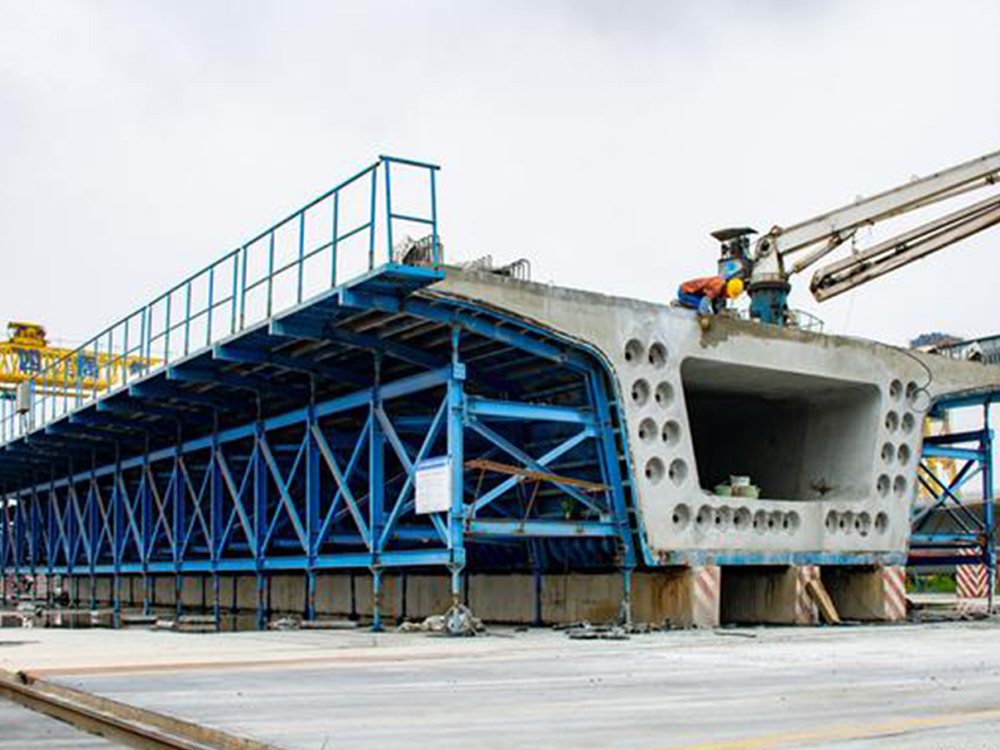01
2022
-
09
Difference between unbonded and slow-bonded prestressing strands
Difference between unbonded and partially bonded prestressing steel strands
Unbonded steel strands are used to improve the performance of structures. Prestress is applied to the structure during construction. The prestress can fully or partially offset the tensile stress caused by loads during the structure's use, preventing structural damage. It is commonly used in concrete structures. Prestressed concrete structures apply pressure to the structure before it bears loads, creating compressive stress in the tensile zone of the concrete when external loads are applied. This offsets or reduces the stress caused by tensile external loads, preventing cracks in the structure under normal use or delaying their appearance. Steel strands are classified into three types according to their bonding method and prestressed concrete structure: bonded prestressing steel strands, unbonded prestressing steel strands, and partially bonded prestressing steel strands. Today, we will focus on the functional differences between unbonded and partially bonded steel strands. First, let's look at a picture of partially bonded steel strands:

Unbonded steel strand refers to prestressed concrete where the prestressing steel strand can freely expand and deform without bonding to the surrounding concrete or cement paste. The entire length of the unbonded prestressing steel strand is coated with grease and encased in a protective plastic tube.
Unbonded steel strand refers to prestressing steel strand that can freely expand and contract during construction without bonding to the surrounding slow-setting gel. After a specified time following construction, the prestressing steel strand is solidified and slowed down. The solidified bonding agent bonds with the surrounding concrete. Main process flow of post-tensioning steel strands: Preparation work ——Making steel strand bundles——Wiring——Installing working anchor rings and working clamps——Installing limit plates and jacks——Installing tools, anchor rings and tool clamps——Applying steel strands - Removing tool clamps and tool anchor rings and jacks. Open the computer host to operate the main interface, and enter the project information and relevant parameters. For different steel strands, the corresponding tensioning procedures and methods should be adopted according to the design requirements or specifications. The commonly used tensioning procedure for low-relaxation steel strands is: 0—initial stress—2 times initial stress—controlled stress— (hold for 5 minutes) anchoring. Click the start button of the control software and closely observe whether the pressure value and displacement value on the computer are normal. During the tensioning process, pay close attention to the working conditions of the equipment and jacks at both ends of the beam and slab, and pay attention to safety. After each bundle is tightened, the jack automatically returns to the top, the host saves the data, and automatically jumps to the next tightening step. The technician checks the elongation value. When the elongation value deviation exceeds plus or minus 6%, stop tightening, find out the cause, and take measures to adjust before continuing tightening.
Unbonded steel strand technology is a new type of prestressing technology developed after unbonded and bonded prestressing technologies. Delayed bonded prestressing absorbs the construction characteristics of unbonded prestressing and has the mechanical characteristics of bonded prestressing. The construction is the same as unbonded prestressing, with flexible arrangement and single-hole anchoring, eliminating the need for corrugated tubes or grouting. After solidification, the slow-setting gel finally achieves viscosity mechanically. The curing of the slow-setting agent achieves a gradual transition from unbonded to bonded prestressing between the prestressing steel and the concrete. It refers to prestressing steel that can freely stretch and deform during construction without bonding to the surrounding slow-setting gel, but within a predetermined time after construction, the prestressing steel will bond to the surrounding concrete through the solidified slow-setting gel. Completely. The prestressing steel and the surrounding concrete form an integral whole, working together to achieve a bonding effect.



